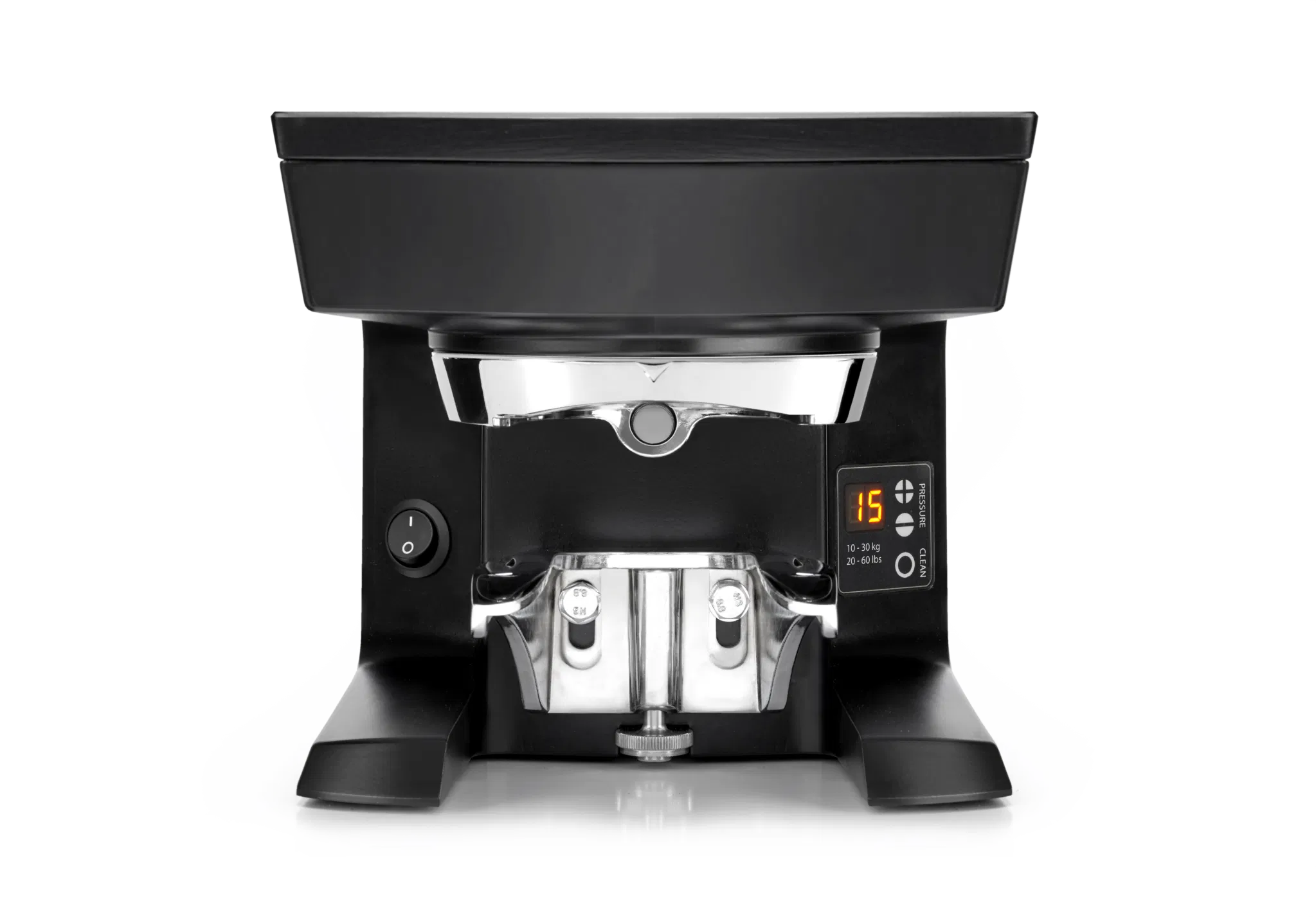
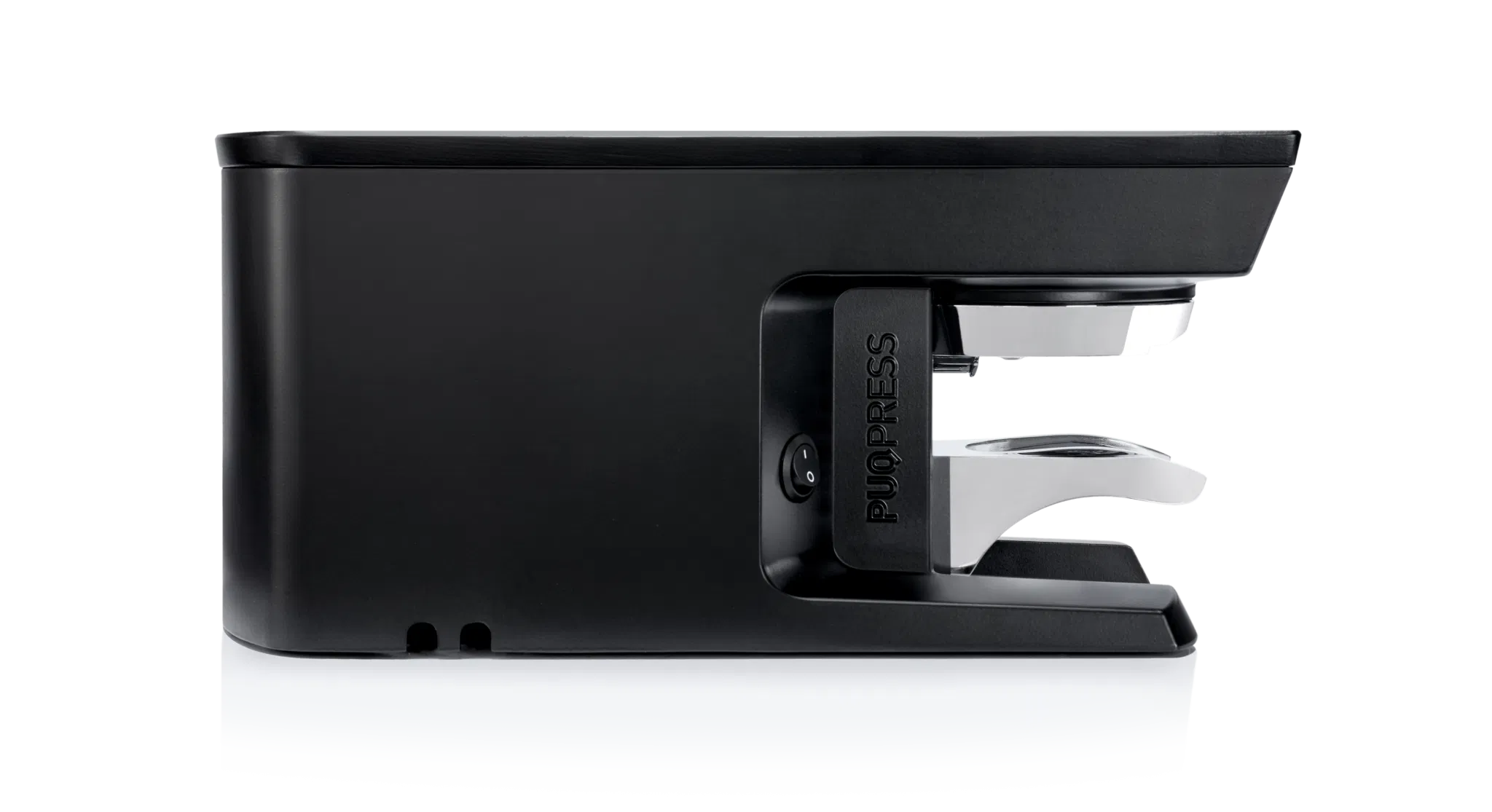
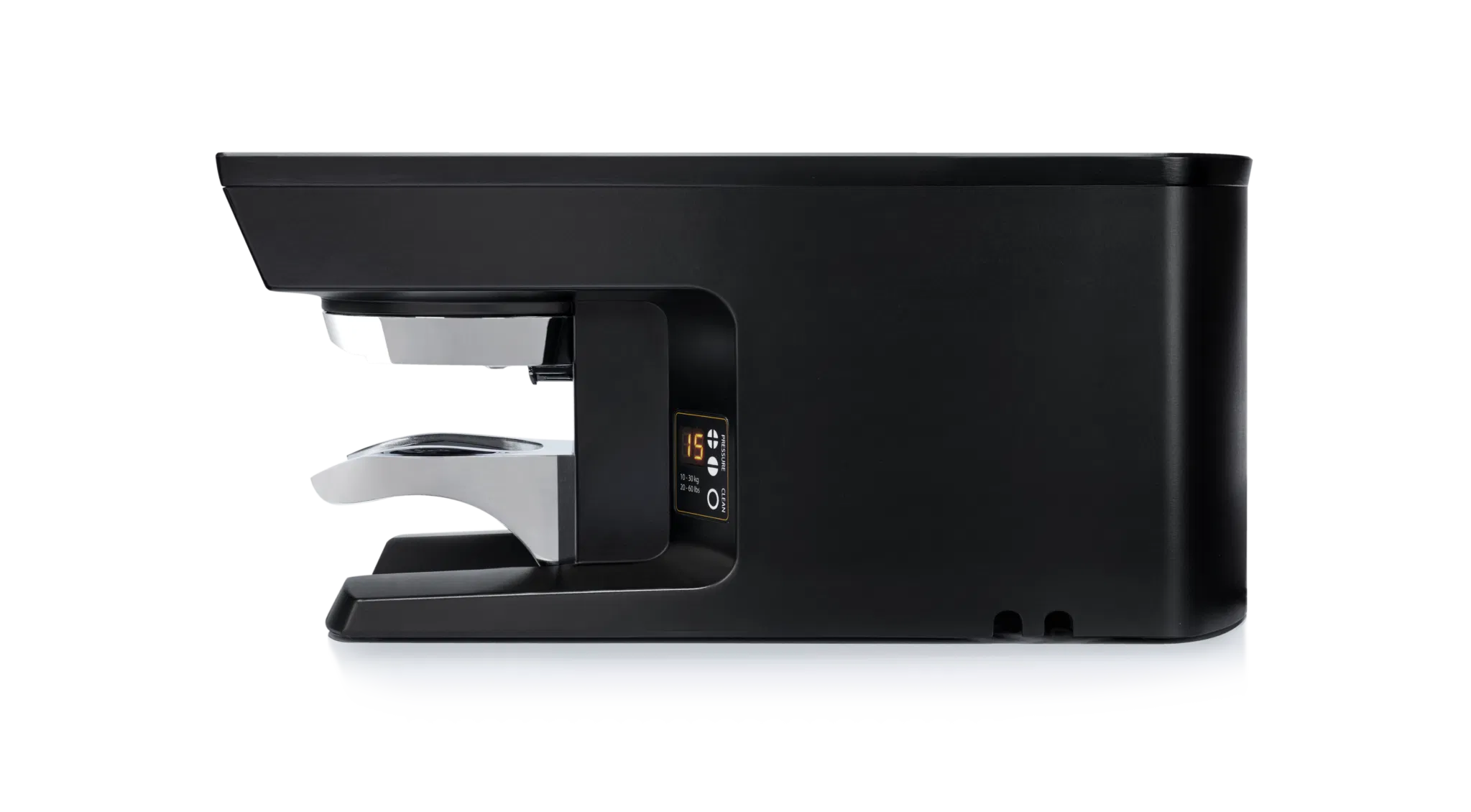
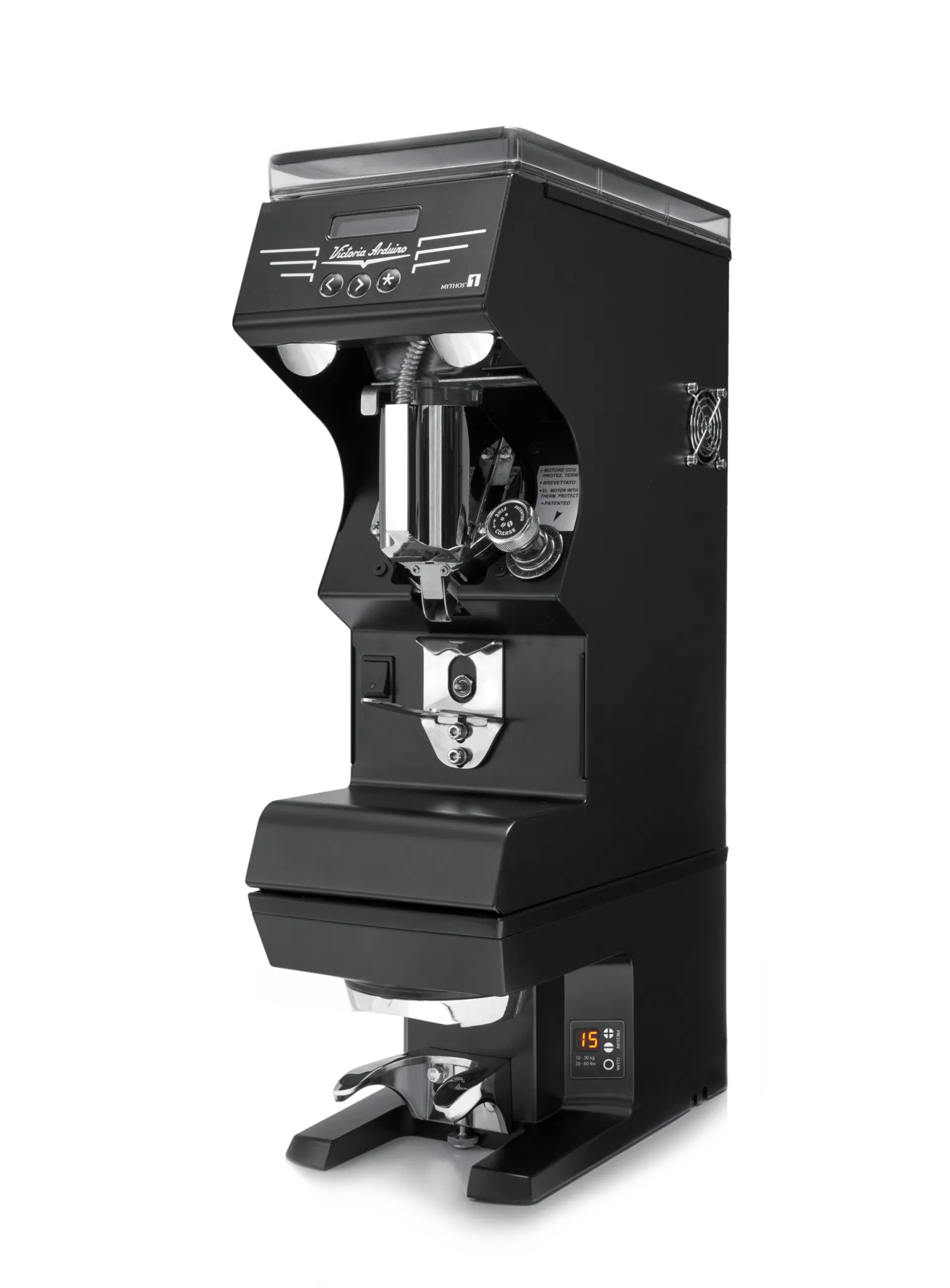
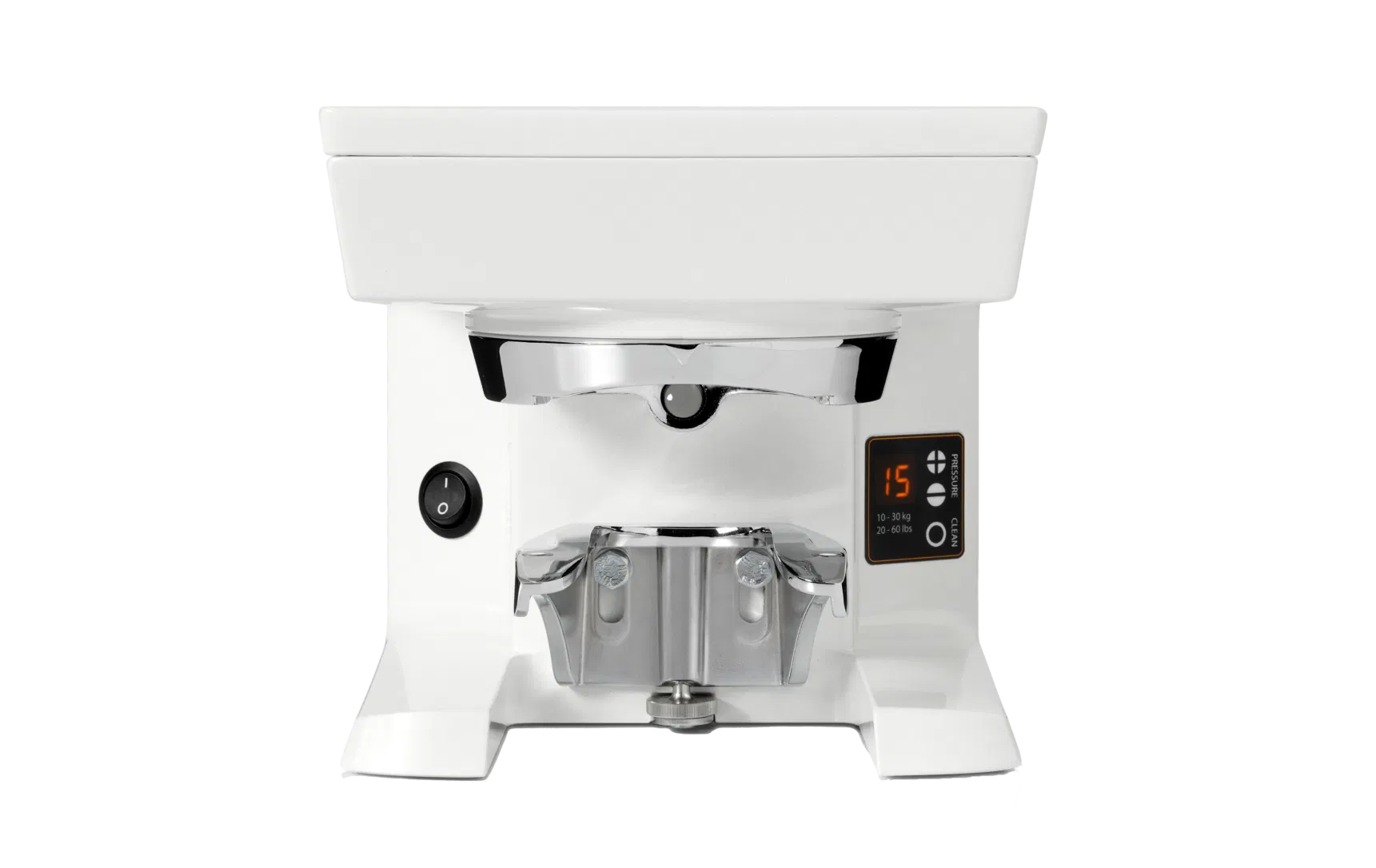
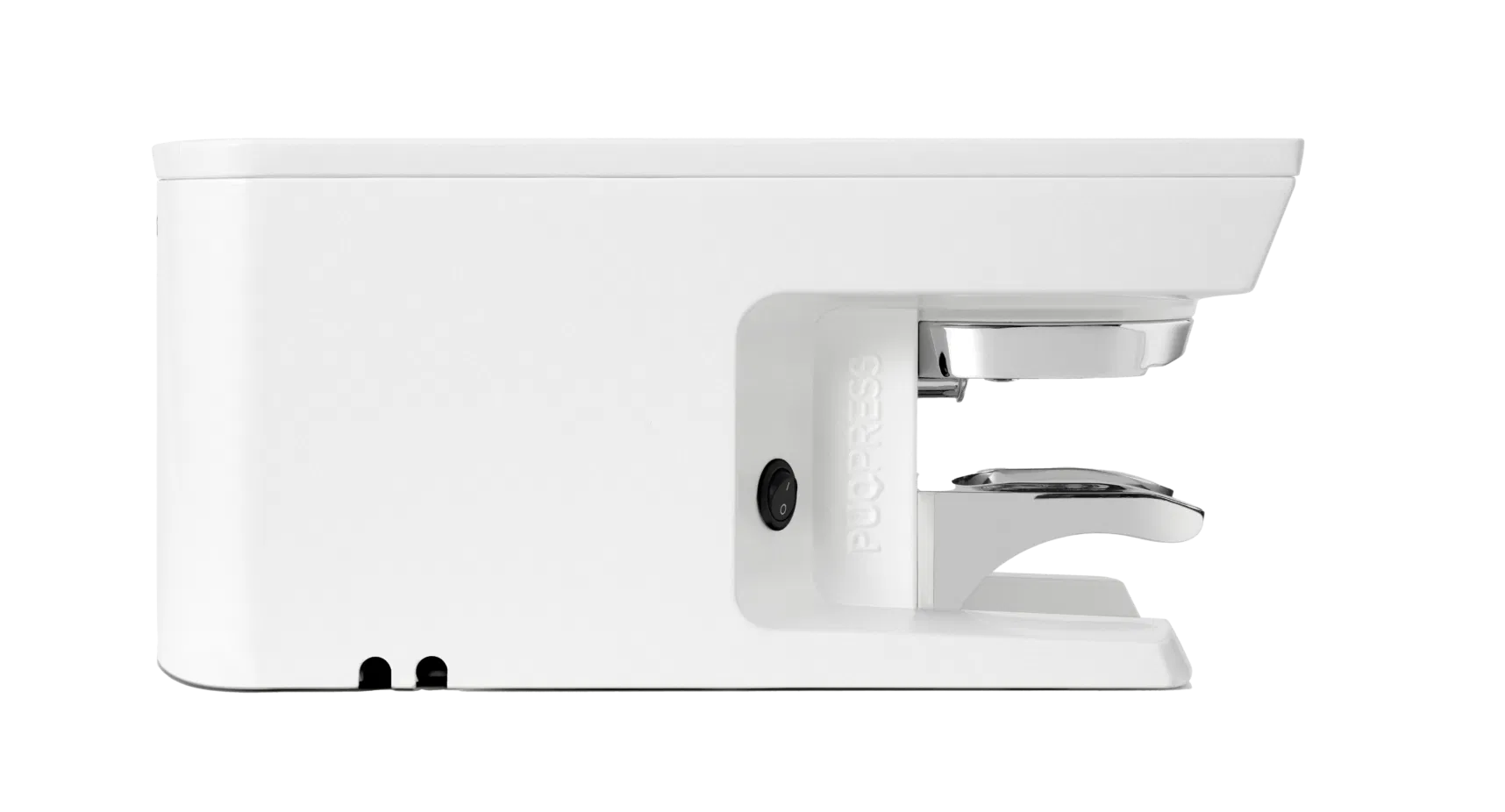
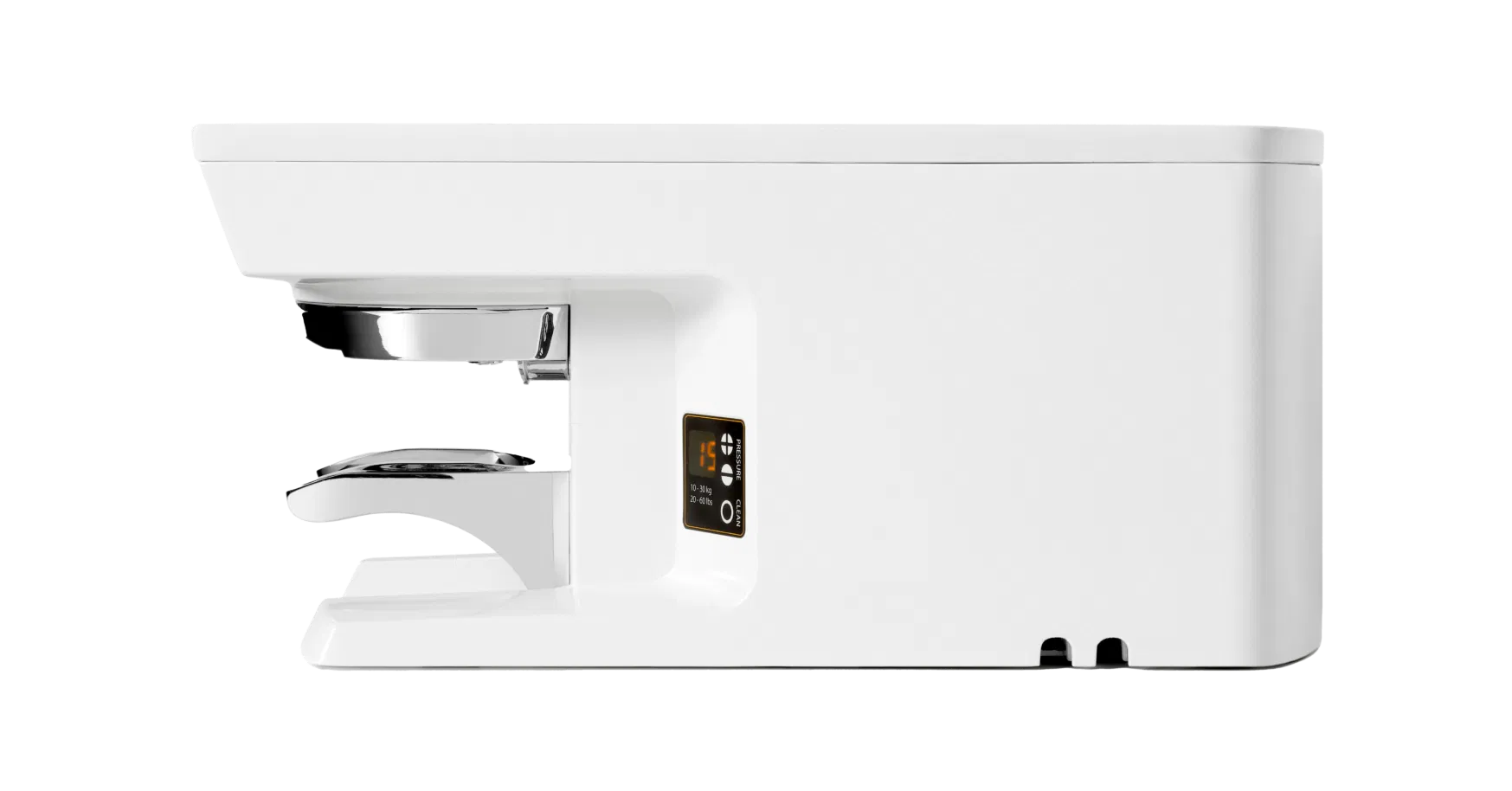
PUQ Press M2 - Tamper integrat pentru Mythos & Mythos II
inkl. Mehrwertsteuer
Finanzieren ab 224,71 € / Monat* mit
🚚 Costuri de livrare în UE: 40 RON
Costuri de livrare UE, vezi politica de livrare.
Passt wunderbar dazu

PUQ Press M2 - Tamper integrat pentru Mythos & Mythos II
PUQ Press M2 - Tamper integrat pentru râșnițele Mythos și Mythos II
PUQ Press M2 a fost special dezvoltat pentru seriile Mythos și Mythos II de la Victoria Arduino / Nuova Simonelli. Acesta înlocuiește direct placa de bază a râșniței, economisește spațiu prețios și asigură o tasare precisă în mod constant - fără nici o amprentă suplimentară.
Compatibilitatea seriei M dintr-o privire de ansamblu
Seria M a PUQ Press cuprinde diferite modele - fiecare potrivit pentru anumiți producători de polizoare:
- M2: Mythos & Mythos II (Victoria Arduino / Nuova Simonelli)
- M3: E65S & E65S GbW (Mahlkönig)
- M4: F64 & F83 (Fiorenzato)
- M4: E80 Supreme & E80S GbW (Mahlkönig, variantă a seriei E80)
- M6: Mythos MY 75 / MY 85 (modele Mythos mai puternice)
De ce un Tamper integrat are sens
Cu un M-Tamper, dispozitivul de tamponare fuzionează cu râșnița dvs.: nu este nevoie de niciun dispozitiv suplimentar, nici de spațiu suplimentar. Barista ajunge în poziția ideală de tamponare direct sub deschiderea râșniței - acest lucru economisește timp, minimizează deplasarea și crește precizia fiecărei doze.
Avantaje dintr-o privire
- Montat direct sub râșniță - economisește spațiu și este ergonomic
- Presiune întotdeauna repetabilă, ideală pentru consecvență în condiții de utilizare ridicată
- Proiectat pentru polizoare specifice - fără compromisuri privind precizia ajustării
- Reduce mișcarea și erorile operatorului între măcinare și compactare
- Flux de lucru optimizat pentru barista - mai rapid, mai eficient, mai curat
Concluzie
PUQ Press M2 este reprezentativ pentru seria M: proiectat în mod clar pentru râșnițele Mythos, eficient în utilizarea de zi cu zi și complet integrat în stația dvs. de cafea. Dacă ulterior treceți la alte tipuri de râșnițe, seria M oferă alternative adecvate cu M3, M4 sau M6 - întotdeauna cu același principiu: integrare, precizie și optimizarea fluxului de lucru.
Angaben zum Hersteller
* Bonität vorausgesetzt. Ratenbeispiel für PayPal Ratenzahlung: effektiver Jahreszins 12,49 % p.a., fester Sollzinssatz 11,80 % p.a., Laufzeit 24 Monate. Genaue Konditionen und Gesamtkosten werden im nächsten Schritt von PayPal angezeigt. Angebot gültig nur für Kunden mit Wohnsitz in Deutschland. Weitere Infos zur Bonitätsprüfung.
If you have any questions, please feel free to contact us at any time. We will get back to you as soon as possible, within 24 hours on weekdays.
-
Shipping info
We ship all products the same day if ordered before 1pm.
-
Support
We will also be there to support you and advise you after your purchase. If you have any questions about the product you purchased from us, please contact us.
-
Contact
Email: hello@naturbohne.de
Telefon: 07454 / 870 48 64
Frequently Asked Questions
I bought a new coffee grinder from Naturbohne and there are coffee residues in it.
Please note: Some manufacturers test their coffee grinders before shipping, which means that small coffee residues or bean residues can occasionally be found in the grinder. This procedure is used to test functionality and is considered a quality feature. Of course, we only sell new products - unless expressly stated otherwise.
Static charge – coffee grounds spray out from the side
With some coffee grinders, the ground coffee can become statically charged and spray out of the portafilter at the side. This means that not all of the ground coffee gets into the portafilter, which can lead to uneven extraction. Our recommendation: Use a dosing funnel to ensure that all of the ground coffee is precisely fed into the portafilter - for optimal espresso enjoyment.
What is dead space in coffee grinders?
Conventional coffee grinders often leave a so-called dead space in which coffee residues accumulate. These residues can not only affect the freshness, but also lead to old and fresh coffee grounds being mixed, which negatively affects the taste. In contrast, single dose grinders have a well-thought-out design that eliminates the dead space. Each portion is ground individually and precisely so that no residues are left behind - for a consistently pure and full-bodied coffee experience.
Which portafilter fits my espresso machine?
When choosing the right portafilter for your portafilter machine, it is important to know that each manufacturer develops its own brewing group - the most well-known is the Faema E61. However, this does not mean that any portafilter will fit without any problems. An incompatible portafilter can leak, which will have a direct negative impact on the quality of your espresso. We therefore recommend using either the portafilter originally supplied or one that is explicitly stated to be compatible with your machine. This will ensure that the pressure is optimally built up and the espresso is perfectly extracted.
Can I visit you or pick up the goods personally?
Yes, of course, you are welcome to come by and look at our products by appointment. We would be happy to advise you personally. The best thing to do is to send us an email with a few suggested appointment times.
We are located 5 minutes from the motorway between Stuttgart and Lake Constance on the edge of the Black Forest.
Important note, first use coffee grinders
Another little tip for the perfect start with your new mill:
You will get the best grinding result after you have ground about 1-2 kg of beans. It is best to use a few cheap beans so that the grinder can work optimally. And if you are wondering what you can do with the bean flour - it is perfect plant fertilizer! 🌿
It contains nitrogen, potassium, sulfur and phosphorus and is a real nutrient bomb for your plants.
Könnt ihr bei meiner Siebträgermaschine eine Offset Kalibrierung durchführen ?
Es gibt einige Argumente, die gegen eine Offset-Kalibrierung bei Lelit-Siebträgermaschinen sprechen, insbesondere bei Modellen wie der Lelit Bianca. Diese beziehen sich vor allem auf die Komplexität und die Limitierungen des Offsets als alleinige Lösung für Temperaturprobleme:
- Temperaturschwankungen und Instabilität. Der Offset berücksichtigt eine konstante Differenz zwischen Kesseltemperatur und Brühtemperatur. In der Praxis können jedoch Temperaturschwankungen auftreten, z. B. durch längere Standzeiten oder kontinuierliches Brühen. Dadurch ist die tatsächliche Brühtemperatur nicht immer präzise vorhersehbar.
- Abhängigkeit von Umgebungsbedingungen. Faktoren wie Raumtemperatur, Luftfeuchtigkeit und der Zustand der Maschine (z. B. Aufheizzeit) beeinflussen die Brühtemperatur erheblich. Ein fester Offset kann diese Variablen nicht dynamisch ausgleichen, was zu ungenauen Ergebnissen führen kann.
- Wärmeverlust bei Standzeiten. Nach längeren Pausen kühlt die Brühgruppe ab, und die Maschine benötigt Zeit, um wieder auf die gewünschte Temperatur zu kommen. Ein korrekt eingestellter Offset kann dies nicht kompensieren, weshalb zusätzliche Maßnahmen wie ein “Cooling Flush” nötig sind.
- Fehlkalibrierungen ab Werk. Bei einigen Lelit-Modellen wurde festgestellt, dass der Offset ab Werk oft ungenau eingestellt ist (z. B. 4–8 Grad zu niedrig bei der Lelit Bianca). Dies erfordert eine manuelle Nachkalibrierung durch Fachpersonal, was für Endnutzer kompliziert sein kann.
- Missverständnisse in der Anwendung. Viele Nutzer sind durch widersprüchliche Informationen zur Offset-Einstellung verunsichert, was zu Fehlanpassungen führen kann. Beispielsweise wird oft erwartet, dass der Offset allein alle Temperaturprobleme löst, obwohl er nur ein Teil eines komplexeren Systems ist.
Fazit
Die Offset-Kalibrierung ist ein nützliches Werkzeug, aber sie sollte nicht isoliert betrachtet werden. Eine Kombination aus präziser PID-Steuerung, regelmäßiger Wartung und angepassten Techniken (z. B. Spülshots) ist notwendig, um optimale Brühergebnisse zu erzielen.
Do you have any more questions?
Contact
If you have any questions about our products, please write to us here or use the chat function.